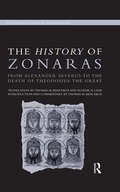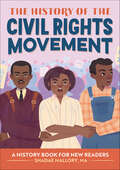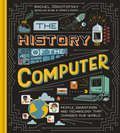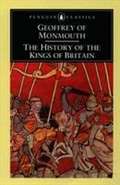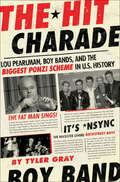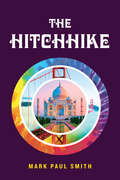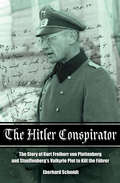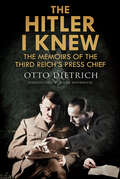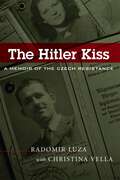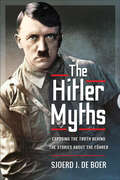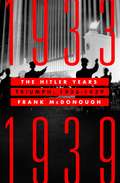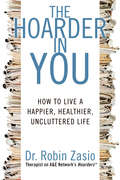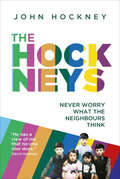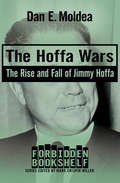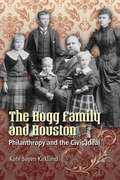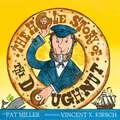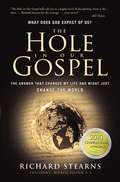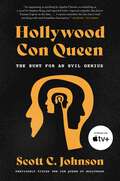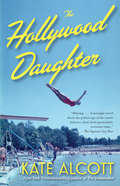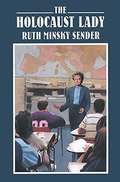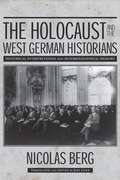- Table View
- List View
The History of Zonaras: From Alexander Severus to the Death of Theodosius the Great
by Thomas Banchich Eugene LaneWhile an exile from Constantinople, the twelfth-century Byzantine functionary and canonist John Zonaras culled earlier chronicles and histories to compose an account of events from creation to the reign of Alexius Comnenus. For topics where his sources are lost or appear elsewhere in more truncated form, his testimony and the identification of the texts on which he depends are of critical importance. For his account of the first two centuries of the Principate, Zonaras employed now-lost portions of Cassius Dio. From the point where Dio’s History ended, to the reign of Theodosius the Great (d. 395), he turned to other sources to produce a uniquely full historical narrative of the critical years 235-395, making Books XII.15-XIII.19 of the Epitome central to the study of both late Roman history and late Roman and Byzantine historiography. This key section of the Epitome, together with Zonaras’ Prologue, here appears in English for the first time, both complemented by a historical and historiographical commentary. A special feature of the latter is a first-ever English translation of a broad range of sources which illuminate Zonaras’ account and the historiographical traditions it reflects. Among the authors whose newly translated works occupy a prominent place in the commentary are George Cedrenus, George the Monk, John of Antioch, Peter the Patrician, Symeon Magister, and Theodore Scutariotes. Specialized indices facilitate the use of the translations and commentary alike. The result is an invaluable guide and stimulus to further research for scholars and students of the history and historiography of Rome and Byzantium.
The History of the Civil Rights Movement: A History Book for New Readers (The History Of: A Biography Series for New Readers)
by Shadae B. MalloryAn introduction to the history of the civil rights movement for kids ages 6 to 9 Years ago, American laws were unfair to Black people. Black people were not allowed to shop in the same stores as white people, eat at the same restaurants, or even go to the same schools. Many brave men and women, like Dr. Martin Luther King, Jr. and Rosa Parks, dedicated their lives to ending these unfair laws through protests, sit-ins, and other peaceful demonstrations. This engaging story explores the ways Black Americans were discriminated against, the protestors' many victories, and how the fight for equality continues today.Discover what sets this book apart from other civil rights books for kids:A visual timeline—Kids will be able to easily follow the history of the civil rights movement with a timeline marking major milestones.Core curriculum—Teach kids about the Who, What, Where, When, Why, and How behind the civil rights movement, and test their knowledge with a quick quiz after they finish.Continuing the fight—Encourage kids to explore questions that help them think about how they can make the world a better place.Help kids understand the struggle for equality in the United States with this standout among Black history books for kids.
The History of the Computer: People, Inventions, and Technology that Changed Our World
by Rachel IgnotofskyA strikingly illustrated overview of the computing machines that have changed our world—from the abacus to the smartphone—and the people who made them, by the New York Times bestselling author and illustrator of Women in Science.Computers are everywhere and have impacted our lives in so many ways. But who created them, and why? How have they transformed the way that we interact with our surroundings and each other?Packed with accessible information, fun facts, and discussion starters, this charming and art-filled book takes you from the ancient world to the modern day, focusing on important inventions, from the earliest known counting systems to the sophisticated algorithms behind AI. The History of the Computer also profiles a diverse range of key players and creators—from An Wang and Margaret Hamilton to Steve Jobs and Sir Tim Berners-Lee—and illuminates their goals, their intentions, and the impact of their inventions on our everyday lives. This entertaining and educational journey will help you understand our most important machines and how we can use them to enhance the way we live. You&’ll never look at your phone the same way again!
The History of the Future: Oculus, Facebook, and the Revolution That Swept Virtual Reality
by Blake J. HarrisThe author of Console Wars reveals the story behind Oculus and its quest for virtual reality: “Masterful . . . filled with unforgettable characters” (Forbes).From iconic books like Neuromancer to blockbuster films like The Matrix, virtual reality has offered a tantalizing vision of the future. But outside of a few research labs and military training facilities, this technology was mere science fiction. Until 2012, when Oculus founder Palmer Luckey—then just a teenage dreamer living alone in a camper trailer—invents a device that has the potential to change the world.With the help of a videogame legend, a serial entrepreneur, and many other colorful characters, Luckey’s scrappy startup kickstarts a revolution and sets out to bring VR to the masses. What follows is the ultimate entrepreneurial journey, a tale of battles won and lost, lessons learned and shocking turns—including an unlikely multi-billion-dollar acquisition by Facebook’s Mark Zuckerberg.Drawing on over a hundred interviews with the key players driving this revolution, The History of the Future weaves together a rich, cinematic narrative that captures the breakthroughs, breakdowns, and human drama of trying to change the world. The result is a supremely entertaining look at the birth of a game-changing new industry.
The History of the Kings of Britain
by Geoffrey Of MonmouthCompleted in 1136, The History of the Kings of Britain traces the story of the realm from its supposed foundation by Brutus to the coming of the Saxons some two thousand years later. Vividly portraying legendary and semi-legendary figures such as Lear, Cymbeline, Merlin the magician and the most famous of all British heroes, King Arthur, it is as much myth as it is history and its veracity was questioned by other medieval writers. But Geoffrey of Monmouth's powerful evocation of illustrious men and deeds captured the imagination of subsequent generations, and his influence can be traced through the works of Malory, Shakespeare, Dryden and Tennyson. Translated and with an introduction by Lewis Thorpe.
The Hit Charade: Lou Pearlman, Boy Bands, and the Biggest Ponzi Scheme in U.S. History
by Tyler GrayJournalist Tyler Gray’s The Hit Charade is the true story of boy band manager Lou Pearlman’s epic rise and fall.Without Lou Pearlman, there would have been no Backstreet Boys, no *NSYNC, and possibly no Justin Timberlake. In the late 1990s, Pearlman’s boy bands ushered out guitar-and-angst-driven grunge music and began to dominate the television and radio airwaves. At the core of this squeaky-clean pop revolution was a sinister international fraud conceived by Pearlman, a huckster who first honed his crooked business skills as a teenage math nerd and blimp enthusiast in Flushing, Queens. From the mid 1980s through 2007, he cheated hundreds of investors out of nearly $500 million. When they finally caught on to him and demanded their money, the “Sixth Backstreet Boy” had already fled to Germany and then to Indonesia, where he was eventually nabbed by authorities and charged with a historic federal fraud.In The Hit Charade, Tyler Gray (the only journalist to speak with Pearlman while he was in jail) weaves together the fascinating behind-the-scenes story of the greedy desperation of this boy-band mogul and monumental scam artist. Gray unravels Pearlman’s twenty-year long Ponzi scheme and explores persistent rumors about alleged inappropriate behavior by Pearlman toward members of the boy bands and other young men. Along the way, former friends, family members, Pearlman business associates, and band members themselves reveal detailed accounts of everything from the heyday of their stardom to Pearlman’s more troubled times.“Lou Pearlman’s schemes were so outlandish they can’t possibly have been real. But Tyler Gray exposes him as one of the most sinister scam artists in history.” —Joe Levy
The Hitchhike
by Mark Paul SmithMark Paul Smith's hitchhike from Indiana to India in 1972 changed him from being an Air Force Officer into a conscientious objector. He hitchhiked through the Iron Curtain and worked on a collective farm in Hungary only to find that communism wasn't our real enemy. He met people from North Vietnam who showed him the real enemy was the U.S. war machine. Being an American was popular in those days, but the people of the world showed Smith kindness and kept him alive when he ran out of money. The long road to decision showed him that people everywhere want peace, not war. His faith in the United States of America was restored when he sued the government and won his case in federal court.
The Hitler Bloodline: Uncovering the Führer's Secret Family
by David GardnerThe Hitler Family Then and NowJoin author David Gardner as he traces the genealogy of history’s most notorious dictator in this revelatory World War 2 biographyA family history haunted by a sinister past. The name Hitler is remembered around the world as the Nazi leader responsible for the deadliest war in modern history. But what about those who share the same last name? Who was the Hitler family, and where are they now? Crime journalist David Gardner investigates these questions in The Hitler Bloodline, a family tree book into how Adolf Hitler shaped the lives and legacy of his siblings and their descendants.Over a century of stories to share. Discover a new side of history with what family life was like before and after the Fuehrer. Starting long before a young Hitler came into the picture, get to know the parents and the older siblings who grew up with the most notorious man in European history. And with the personal accounts of extended family members during and after World War 2, The Hitler Bloodline shares what it was like for the surviving descendants to break away from their family’s darkest shadow. With new details and surprising revelations in David Gardner’s historical research, learn how generations of a family can be impacted by the legacy of their surname to this very day.Inside, you’ll also find:A genogram of past and present household membersHow Hitler’s nephew joined the United States NavyIf the Hitler family has Jewish ancestryThe identity of an alleged sonIf you liked World War 2 biographies such as Fatherland, The Splendid and the Vile, or The Best New True Crime Stories: Crimes of Famous & Infamous Criminals, you’ll love The Hitler Bloodline.
The Hitler Conspirator: The Story of Kurt Freiherr von Plettenberg and Stauffenberg's Valkyrie Plot to Kill the Führer
by Eberhard SchmidtOne man&’s part in the Nazi plan to assassinate Hitler during WWII—and &“an interesting account of one of the key figures in the resistance movement&” (Britain at War). As the descendant of an aristocratic family from Westphalia, Germany, Kurt Baron von Plettenberg served as an officer in both world wars. But he never supported the twisted ideals that drove the Third Reich. So, when he found a group of soldiers—including Operation Valkyrie mastermind Claus von Stauffenberg—who realized the true insanity of the Nazi regime, von Plettenberg was compelled to join the resistance that was growing within Hitler&’s own circle. On July 20, 1944, the plot to assassinate the führer was finally put into action. Unfortunately for von Plettenberg and his fellow conspirators, the effort failed. Von Plettenberg was not immediately discovered as one of the conspirators. But only a few weeks before the end of the war, he was condemned and arrested. It was then that he was forced to make a terrible decision: betray his friends under torture—or do what his personal honor dictated . . . This gripping biography shows for the first time how von Plettenberg found a way to prevail during those dark days and how significantly he influenced the resistance against Hitler.
The Hitler I Knew: The Memoirs of the Third Reich's Press Chief
by Otto DietrichA biography of Hitler by his long-serving press chief and close associate. "Up to the last moment, his overwhelming, despotic authority aroused false hopes and deceived his people and his entourage. Only at the end, when I watched the inglorious collapse and the obstinacy of his final downfall, was I able suddenly to fit together the bits of mosaic I had been amassing for twelve years into a complete picture of his opaque and sphinx-like personality." - Otto Dietrich When Otto Dietrich was invited in 1933 to become Adolf Hitler's press chief, he accepted with the simple, uncritical conviction that Adolf Hitler was a great man, dedicated to promoting peace and the welfare for the German people. At the end of the war, imprisoned and disillusioned, Dietrich sat down to write what he had seen and heard in twelve years of the closest association with Hitler, requesting that it be published after his death. Dietrich's role placed him in a privileged position. He was hired by Hitler in 1933, and was a confidant until 1945, and he worked and clashed with Joseph Goebbels. His direct, personal experience of life at the heart in the Reich makes for compelling reading.
The Hitler Kiss: A Memoir of Czech Resistance
by Radomir LuzaThis gripping autobiography is at once a heart-pounding adventure story, a moving recollection of a larger-than-life father, and an important account of the Czech resistance. Radomir Luza's father was a revered army general when the Nazis stormed into Czechoslovakia. After his father went underground to avoid arrest and torture, the nineteen-year-old Radomir spent weeks in a Gestapo prison. Upon his release, he joined his father in hiding. General Luza became the military commander of the Czech resistance, while Radomir secretly helped organize the country's largest resistance network. Luza's narrative makes palpable the terror of being constantly hunted and nearly snared by betrayals and Gestapo raids. The Hitler Kiss is a portrait of courage, tenderness, optimism, and sheer survival.
The Hitler Myths: Exposing the Truth Behind the Stories About the Führer
by Sjoerd J. de BoerAdolf Hitler remains one of the most discussed figures in world history. Every year, an untold number of articles and books are published, and television programs and internet pages are produced, by respected historians through to amateur conspiracy theorists. One of the consequences of this continuous flow of stories is that, over time, increasing numbers of falsehoods and fabrications have emerged about Hitler. Many of these have subsequently gained credence by virtue of their constant repetition – however bizarre they may be. These include such claims that Hitler was impotent (contradicted by another myth that he had an illegitimate son), that he had Jewish ancestors, or that he had killed his niece. Another claim, one of the most persistent, is that he did not commit suicide but escaped Berlin to live in Argentina for years after the war, despite his well-recorded failing health. What is the truth about his corpse, his sexual experiences, his years of poverty, his complete dominance of his subordinates? How much of what we think we know is the result of intentional or misunderstood modern interpretations? Many rumours also circulated during Hitler’s life and, with the passage of time, have been presented as facts despite having no substantial foundation. Was Hitler really a hero of the First World War and, if so, why was he not promoted beyond the rank of corporal? Was he the true author of Mein Kampf and did he write a second book that was never published, and was Hitler initially a socialist? In The Hitler Myths the author clinically dissects many of these myths, often in a highly amusing fashion, as he exposes the inaccuracies and impossibilities of the stories. The myths – the familiar and the obscure – are discussed chronologically, following the course of Hitler’s life. In his analysis of each of the myths, the author draws on an array of sources to prove or disprove the rumours and speculations – once and for all!
The Hitler Years: Disaster, 1940-1945
by Frank McDonoughThe Second Volume of a new chronicle of the Third Reich under Hitler's hand, ending with his death and Germany's disastrous defeat.In The Hitler Years: Disaster 1940-1945, Frank McDonough completes his brilliant two-volume history of Germany under Hitler’s Third Reich. At the beginning of 1940, Germany was at the pinnacle of its power. By May 1945, Hitler was dead and Germany had suffered a disastrous defeat. Hitler had failed to achieve his aim of making Germany a super power and had left her people to cope with the endless shame of the Holocaust. Despite Hitler's grand ambitions and the successful early stages of the Third Reich's advances into Europe, Frank McDonough convincingly argues that Germany was only ever a middle-ranking power and never truly stood a chance against the combined forces of the Allies. In this second volume of The Hitler Years, Professor Frank McDonough charts the dramatic change of fortune for the Third Reich and Germany's ultimate defeat.
The Hitler Years: Triumph, 1933-1939
by Frank McDonoughFrom historian Frank McDonough, the first volume of a new chronicle of the Third Reich under Hitler's hand.On January 30th, 1933, Adolf Hitler was appointed the German Chancellor of a coalition government by President Hindenburg. Within a few months he had installed a dictatorship, jailing and killing his leftwing opponents, terrorizing the rest of the population and driving Jews out of public life. He embarked on a crash program of militaristic Keynesianism, reviving the economy and achieving full employment through massive public works, vast armaments spending and the cancellations of foreign debts. After the grim years of the Great Depression, Germany seemed to have been reborn as a brutal and determined European power.Over the course of the years from 1933 to 1939, Hitler won over most of the population to his vision of a renewed Reich. In these years of domestic triumph, cunning maneuvers, pitting neighboring powers against each other and biding his time, we see Hitler preparing for the moment that would realize his ambition. But what drove Hitler's success was also to be the fatal flaw of his regime: a relentless belief in war as the motor of greatness, a dream of vast conquests in Eastern Europe and an astonishingly fanatical racism.
The Hoarder in You: How to Live a Happier, Healthier, Uncluttered Life
by Robin ZasioWe all have treasured possessions—a favorite pair of shoes, a much-beloved chair, an ever-expanding record collection. But sometimes, this emotional attachment to our belongings can spiral out of control and culminate into a condition called compulsive hoarding. From hobbyists and collectors to pack rats and compulsive shoppers—it is close to impossible for hoarders to relinquish their precious objects, even if it means that stuff takes over their lives and their homes. According to psychologist Dr. Robin Zasio, our fascination with hoarding stems from the fact that most of us fall somewhere on the hoarding continuum. Even though it may not regularly interfere with our everyday lives, to some degree or another, many of us hoard. The Hoarder In You provides practical advice for decluttering and organizing, including how to tame the emotional pull of acquiring additional things, make order out of chaos by getting a handle on clutter, and create an organizational system that reduces stress and anxiety. Dr. Zasio also shares some of the most serious cases of hoarding that she's encountered, and explains how we can learn from these extreme examples—no matter where we are on the hoarding continuum.
The Hockneys: Never Worry What The Neighbours Think
by John Hockney‘The most charming… portrait of this ever-popular artist… so enormously appealing: good-natured, bluntly told, skimmed with Yorkshire humour… This is a story of sticky jam tarts, catching tadpoles in jars, torchlit conversations under the bedclothes, gossipy queues at the butcher’s and hikes among the hedgerows under swallow-strewn skies.’ The Telegraph‘Never worry what the neighbours think’ was the philosophy that Kenneth Hockney used to inspire his children – David Hockney, one of the world’s greatest living artists and siblings John, Paul, Philip and Margaret – to each choose their own route in life.The Hockney’s is a never before seen insight into the lives of the family by youngest brother John, from growing up in the Second World War in Bradford through to their diverse lives across three continents. Hardship, successes as well as close and complex relationships are poignantly illustrated with private photographs.With a rare and spirited look into the lives of an ordinary family with extraordinary stories, we begin to understand the creative freedom that led to their successful careers and the launchpad for an artist’s work that has inspired and continues to inspire generations across the world.
The Hoffa Wars: The Rise and Fall of Jimmy Hoffa (Forbidden Bookshelf #12)
by Dan E. MoldeaThe definitive portrait of the powerful, corruption-ridden Teamsters union and its legendary president, Jimmy Hoffa—organizer, gangster, convict, and conspirator—with a new afterword by the author James Riddle &“Jimmy&” Hoffa was one of the most fascinating and controversial figures in twentieth-century America. His remarkable journey from young union organizer to all-powerful head of the International Brotherhood of Teamsters is an epic tale worthy of a Hollywood blockbuster, jam-packed with intrigue, subterfuge, violence, and corruption. His successes were monumental, his fall truly spectacular, and his bizarre disappearance in the summer of 1975 remains one of the great mysteries in American history. Widely considered to be the definitive volume on the career and crimes of Jimmy Hoffa, The Hoffa Wars, by acclaimed investigative journalist Dan E. Moldea, is an eye-opening, extensively researched account of the steady rise and fall of an ingenious, ambitious man who was instrumental in transforming a small union of seventy-five thousand truckers into the most powerful labor brotherhood in world. Shocking disclosures in Moldea&’s no-holds-barred account include the devil&’s bargain that put Hoffa and his union in the pockets of the Mob, Hoffa&’s role in the joint CIA-Mafia plots to kill Cuban leader Fidel Castro, the deal Hoffa made with US president Richard Nixon that released the disgraced Teamster president from prison eight years early, and the truth behind Hoffa&’s eventual disappearance and likely murder. But perhaps the most startling revelation of all concerns the integral part Jimmy Hoffa played, in concert with underworld kingpins Carlos Marcello and Santos Trafficante, in America&’s most terrible twentieth-century crime: the assassination of President John F. Kennedy.
The Hogg Family and Houston
by Kate Sayen KirklandProgressive former governor James Stephen Hogg moved his business headquarters to Houston in 1905. For seven decades, his children Will, Ima, and Mike Hogg used their political ties, social position, and family fortune to improve the lives of fellow Houstonians. As civic activists, they espoused contested causes like city planning and mental health care. As volunteers, they inspired others to support social service, educational, and cultural programs. As philanthropic entrepreneurs, they built institutions that have long outlived them: the Houston Symphony, the Museum of Fine Arts, Memorial Park, and the Hogg Foundation. The Hoggs had a vision of Houston as a great city-a place that supports access to parklands, music, and art; nurtures knowledge of the "American heritage which unites us"; and provides social service and mental health care assistance. This vision links them to generations of American idealists who advanced a moral response to change. Based on extensive archival sources, The Hogg Family and Houston explains the impact of Hogg family philanthropy for the first time. This study explores how individual ideals and actions influence community development and nurture humanitarian values. It examines how philanthropists and volunteers mold Houston's traditions and mobilize allies to meet civic goals. It argues that Houston's generous citizens have long believed that innovative cultural achievement must balance aggressive economic expansion.
The Hole Story of the Doughnut
by Pat MillerA colorful look at the true story behind one sea captain&’s scrumptious legacy that has become one of our favorite snacks.In 1843, fourteen-year-old Hanson Gregory left his family home in Rockport, Maine, and set sail as a cabin boy on the schooner Achorn, looking for high-stakes adventure on the high seas. Little did he know that a boatload of hungry sailors, coupled with his knack for creative problem-solving, would yield one of the world&’s most prized and beloved pastries.Lively and inventive cut-paper illustrations add a taste of whimsy to this sweet, fact-filled story that includes an extensive bibliography, author's note, and timeline.&“A lively offering for reading and sharing that will encourage the youngest of researchers to wonder and learn about other everyday items in their world.&”—School Library Journal
The Hole in Our Gospel: What Does God Expect of Us? The Answer That Changed My Life and Might Just Change the World
by Richard StearnsThis is a story of how a corporate CEO faced his own struggle to obey God whatever the cost, and his passionate call for Christians to change the world by actively living out their faith.
The Hollywood Con Queen: The Hunt for an Evil Genius
by Scott C Johnson“This book is as engrossing as anything by Agatha Christie, as unsettling as a novel by Stephen King, and reported with a vigorous empathy that leaves Truman Capote in the dust. Scott Johnson’s courage, his relentless quest for the truth behind a set of brilliantly obscured cruelties, and his examination of the very fabric of psychopathy ultimately lead him to question how the appalling lies spat out by the Con Queen relate to the daily untruths required of us all. His narrative is further deepened by breathtakingly honest reportage about himself and his family, which led him to this radical investigation of a deformed mind. I cannot remember the last time I read anything with such breathless fascination.”—Andrew SolomonThe spellbinding tale of an epic international manhunt for a psychopathic con artist who exploited the dreams of creators to steal dozens of identities and millions of dollars.Blending years of deep reporting with distinctive, powerful prose, Scott C. Johnson’s unique true crime narrative recounts the tale of the brilliantly cunning imposter who carved a path of financial and emotional destruction across the world. Gifted with a diabolical flair for impersonation, manipulation, and deception, the Con Queen used their skill with accents and deft psychological insight to sweep through the entertainment industry. Johnson traces the origins of this mastermind and follows the years-long investigation of a singularly determined private detective who helped deliver them to the FBI. Described by one victim as a “crazy, evil genius,” the Con Queen enacted one of the most elaborate scams ever to hit Hollywood—the perfect criminal, committing the perfect crime for our time. But for what purpose? And with what motive? Johnson’s unparalleled access to sources—including exclusive interviews with victims and never-before-heard recordings of the Con Queen—brought global attention to the scam, spurred law enforcement to act, and led Johnson himself to venture in search of the Con Queen. Journeying from Los Angeles to the United Kingdom to Jakarta, Johnson eventually came face-to-face with one of the most disturbing criminal minds in recent history, only to realize what chasing the Con Queen revealed about himself and his own troubled family history.
The Hollywood Daughter: A Novel
by Kate AlcottFrom the New York Times bestselling author of The Dressmaker and A Touch of Stardust, comes a Hollywood coming-of-age novel, in which Ingrid Bergman's affair with Roberto Rossellini forces her biggest fan to reconsider everything she was raised to believe In 1950, Ingrid Bergman—already a major star after movies like Casablanca and Joan of Arc—has a baby out of wedlock with her Italian lover, film director Roberto Rossellini. Previously held up as an icon of purity, Bergman's fall shocked her legions of American fans. Growing up in Hollywood, Jessica Malloy watches as her PR executive father helps make Ingrid a star at Selznick Studio. Over years of fleeting interactions with the actress, Jesse comes to idolize Ingrid, who she considered not only the epitome of elegance and integrity, but also the picture-perfect mother, an area where her own difficult mom falls short. In a heated era of McCarthyism and extreme censorship, Ingrid's affair sets off an international scandal that robs seventeen-year-old Jesse of her childhood hero. When the stress placed on Jesse's father begins to reveal hidden truths about the Malloy family, Jesse's eyes are opened to the complex realities of life—and love. Beautifully written and deeply moving, The Hollywood Daughter is an intimate novel of self-discovery that evokes a Hollywood sparkling with glamour and vivid drama.From the Hardcover edition.
The Hollywood Kid: The Violent Life and Violent Death of an MS-13 Hitman
by Oscar Martinez Juan MartinezThe compelling story of the life and death of a Salvadoran gangsterAs a boy, Miguel Ángel Tobar’s small town in El Salvador was torn apart by guerrillas and US- backed death squads. Still a preteen, he joined a different kind of death squad—the Hollywood Locos Salvatrucha—a clique of the Mara Salvatruchas, better known as MS-13. This international criminal organization began on the streets of Los Angeles in the 1980s, as Salvadoran children, whose families had fled their country’s civil war, banded together to defend themselves from LA gangs. Denied refugee status, the Salvadorans found themselves pushed into the shadows and besieged by violence, and MS-13 itself mutated into a gang. When large-scale US deportations began, violence was exported from the United States to El Salvador, helping make it one of the world’s deadliest countries and in turn propelling new waves of refugees northward. The Salvadoran journalist Óscar Martinez and his anthropologist brother Juan José Martínez got to know the Hollywood Kid when he informed on MS-13. In his hideaway shack, he recounted a life of killing—a death toll of more than fifty rival gang members—until his own murder ended the story. Vivid and violent, The Hollywood Kid brings a brutal world to life, illustrating the geopolitical forces propelling a country toward ever more vicious extremes.
The Holocaust Lady
by Ruth Minsky SenderIn this emotional sequel to The Cage and To Life, Ruth Minsky Sender relates her struggle to build a new life in America, her battle to cope with her horrific memories of the Holocaust, and her decision to tell her story.In an effort to teach children about the Holocaust, the author describes the impact of this horrifying event on her life and the lives of other survivors.
The Holocaust and the West German Historians
by Nicolas BergThis landmark book was first published in Germany, provoking both acclaim and controversy. In this "history of historiography," Nicolas Berg addresses the work of German and German-Jewish historians in the first three decades of post#150;World War II Germany. He examines how they perceived#151;and failed to perceive#151;the Holocaust and how they interpreted and misinterpreted that historical fact using an arsenal of terms and concepts, arguments and explanations. This English-language translation is also a shortened and reorganized edition, which includes a new introduction by Berg reviewing and commenting on the response to the German editions. Notably, in this American edition, discussion of historian Joseph Wulf and his colleague and fellow Holocaust survivor Léon Poliakov has been united in one chapter. And special care has been taken to make clear to English speakers the questions raised about German historiographical writing. Translator Joel Golb comments, "From 1945 to the present, the way historians have approached the Holocaust has posed deep-reaching problems regarding choice of language. . . . This book is consequently as much about language as it is about facts. "
